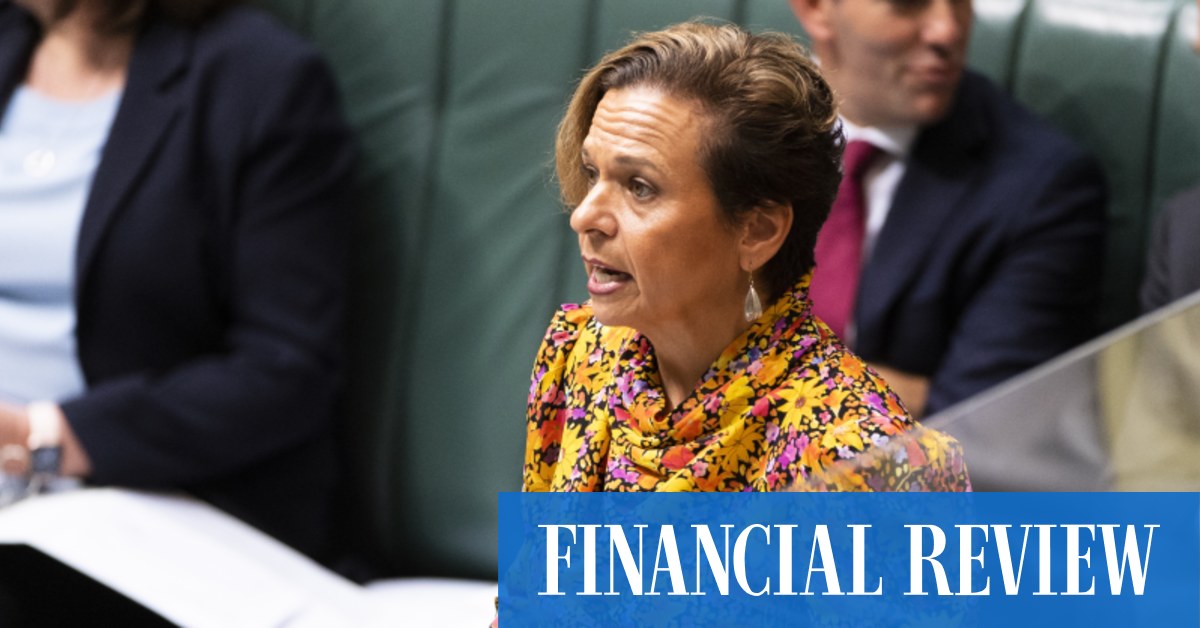
Opposition support for gambling ad changes put the $300.5 million spent on gambling advertising in 2022 – $180 million of which went to television broadcasters, per industry figures – in serious jeopardy. Ms Rowland said while gambling is the focus, the $330 million ad sector that includes fast food could be next.
Fast food and high-sugar food and drinks are restricted under the ad industry’s own self-regulatory codes, which were tightened in 2021 to stop certain unhealthy food ads being shown when more than a quarter of an audience is under 15 years old.
The $330.7 million that fast food restaurants spent in 2022 exceeded gambling ad expenditure, according to figures from Standard Media Index, which measures spend by major advertising agencies.
“This is the regulatory remit – to strike that balance between community expectations, the sustainability of the sector, and also minimising harms,” Ms Rowland said.
A crackdown on junk food advertising has been an ongoing campaign for independent MP Sophie Scamps, and would add to a long list of regulatory battles the media sector is currently navigating. The government just renewed the anti-siphoning list, the 30-year-old law that keeps major sports on free-to-air television, but said it was “interim” and flagged a deeper review.
It is also planning to legislate a so-called ‘prominence’ framework, which would force TV manufacturers to make free-to-air television and Australian media company apps like 9Now and 7plus easy to find on internet-connected televisions.
There are also proposed amendments to privacy laws that could severely disrupt how media companies target ads, and making it much easier for readers and viewers to opt out of receiving ads, but Ms Rowland was unapologetic about the pace and burden of media reform.
“We are delivering on our election commitments. There is a huge body of work to be done. But we are working through it methodically,” she said.
Quota pushback
The government is due to meet in Canberra on Monday with the ABC’s content chief Chris Oliver-Taylor, SBS’ TV director Kathryn Fink, Nine chief executive Mike Sneesby, Netflix’s production policy boss Debra Richards, and screen producers, as part of its push to force streaming companies to spend more on Australian productions. The decision falls into the gap between overlapping portfolios: Arts, held by Tony Burke, and Ms Rowland in Communications.
There is fierce pushback from major broadcasters, which would rather stronger demands on international streamers to pay tax, and fear spiralling costs to produce television shows. Nine, which owns streaming platform Stan, is the publisher of The Australian Financial Review.
Ms Rowland said she doesn’t buy the argument, put forward by Nine, Seven and Ten through lobby group Free TV, that quotas would push up costs, put work by top Australian talent behind paywalls, and benefit global players. Quotas are also a clear election commitment, she said.
“We understand the arguments that they are making regarding what they say are potentially inflationary impacts,” she said. “But a lot of that is also driven – it’s been driven right now – through a lack of production space, and really a lack of focus on the creative industries that has built up for decades.”
Broadcasters argue record amounts of money are being spent on Australian screen productions – $1.51 billion in 2021-22 per Screen Australia’s figures, and quotas would be addressing a problem that doesn’t exist.
“The purpose of regulation is, of course, it’s not only to address market failure, it’s also to be aware, and to anticipate where failures may be arising in future,” Ms Rowland said.
“Our intention here is not only harmonisation, but also to produce the outcomes so that we get some guaranteed investment in Australian content, particularly drama and documentary, children’s programs. We want that level playing field. The decision has been made. The question now is in terms of implementation, and that is why we are undertaking this consultative work.”
Legislating prominence for Australian networks is another election commitment, she noted, and one that would benefit local players.
“As it stands today, there are obligations that apply to the production of Australian content,” she said. “We want to make sure that people can see it, can access it, and all the benefits that flow from that in terms of both cultural identity but also the economics of the free-to-air broadcasting model are maintained.”
‘Genuine questions’
Ms Rowland said she was not yet convinced artificial intelligence platforms like ChatGPT and Google’s Bard – which was unveiled last week – would fall under the next negotiations of the news media bargaining code.
Former competition boss Rod Sims has backed AI firms paying media companies. Ms Rowland, on the other hand, says there’s no clear answer.
“The code was it was predicated on the issue of dominance. AI is more concerned with – in terms of the media – I see it as more concerned within an IP, so the intellectual property angle… I think everyone’s exploring where it should line up at the moment.”